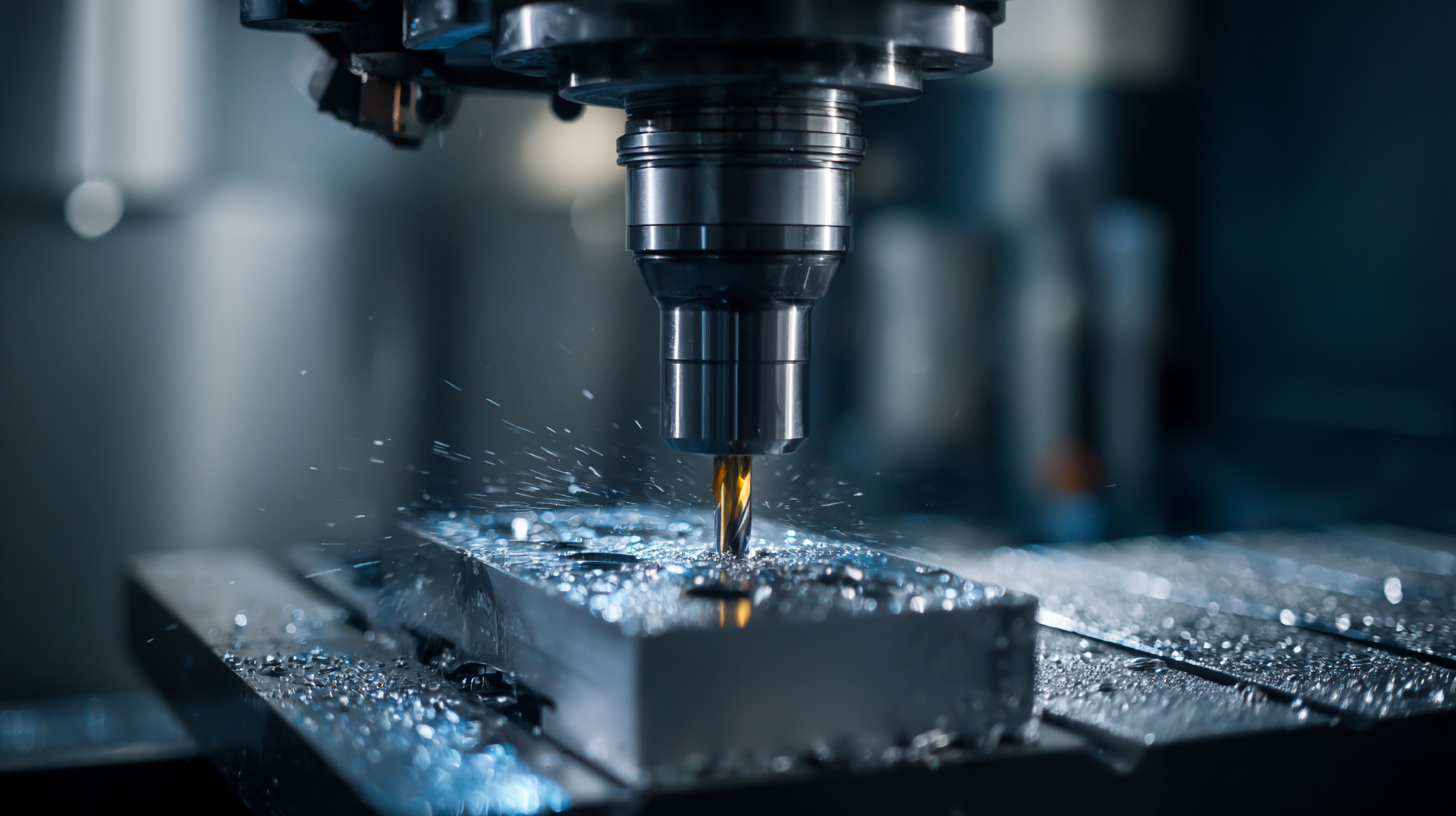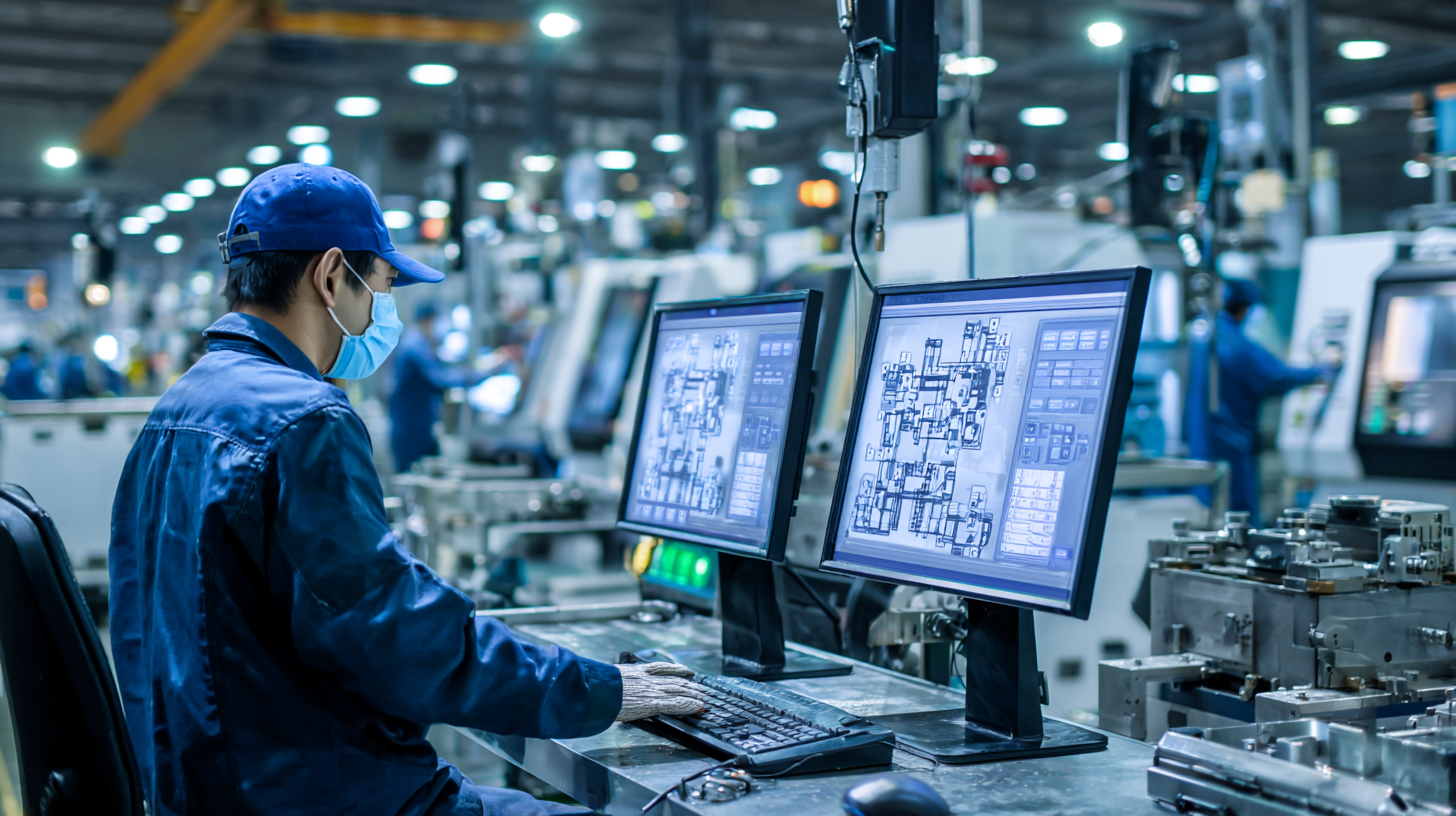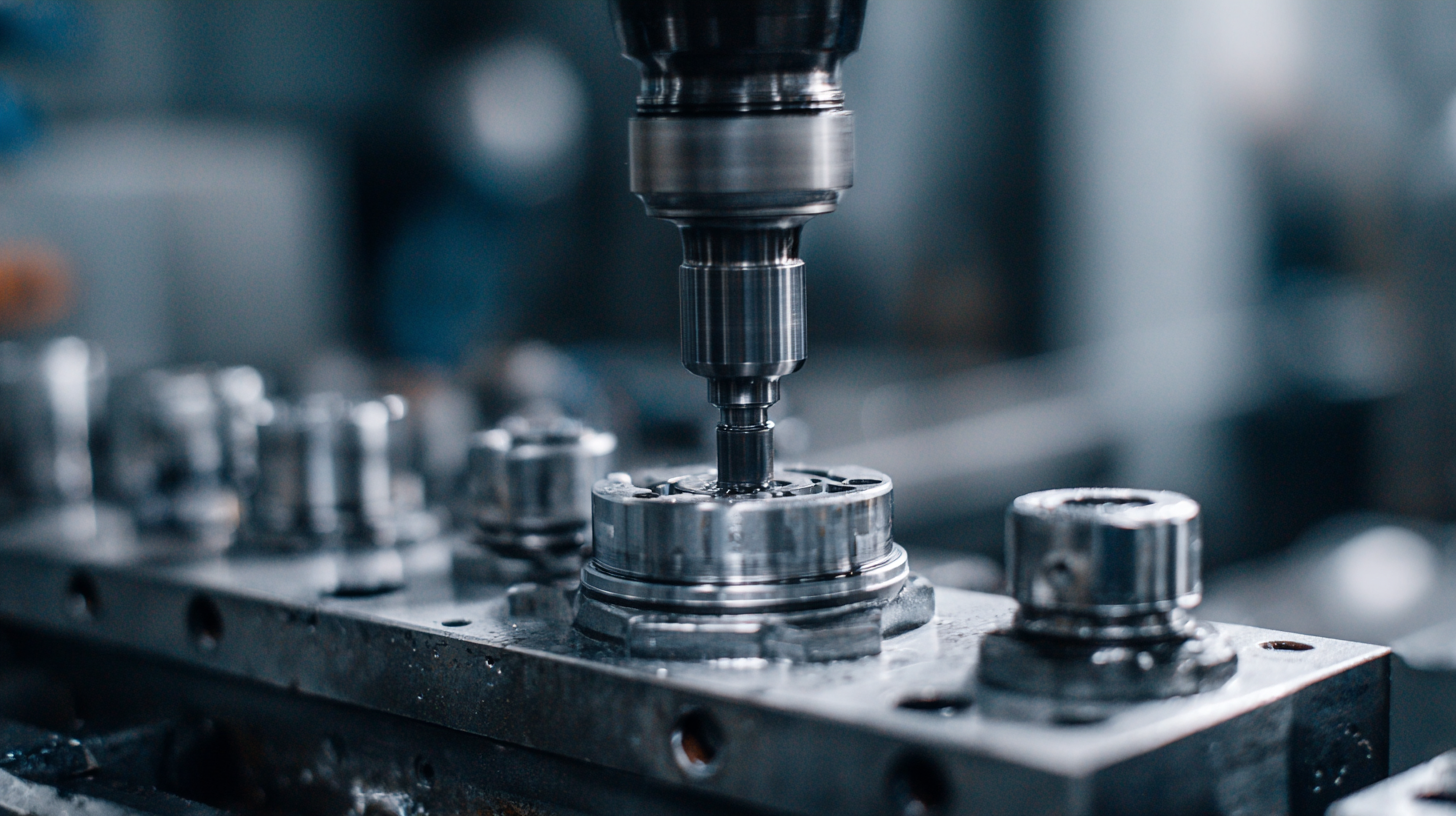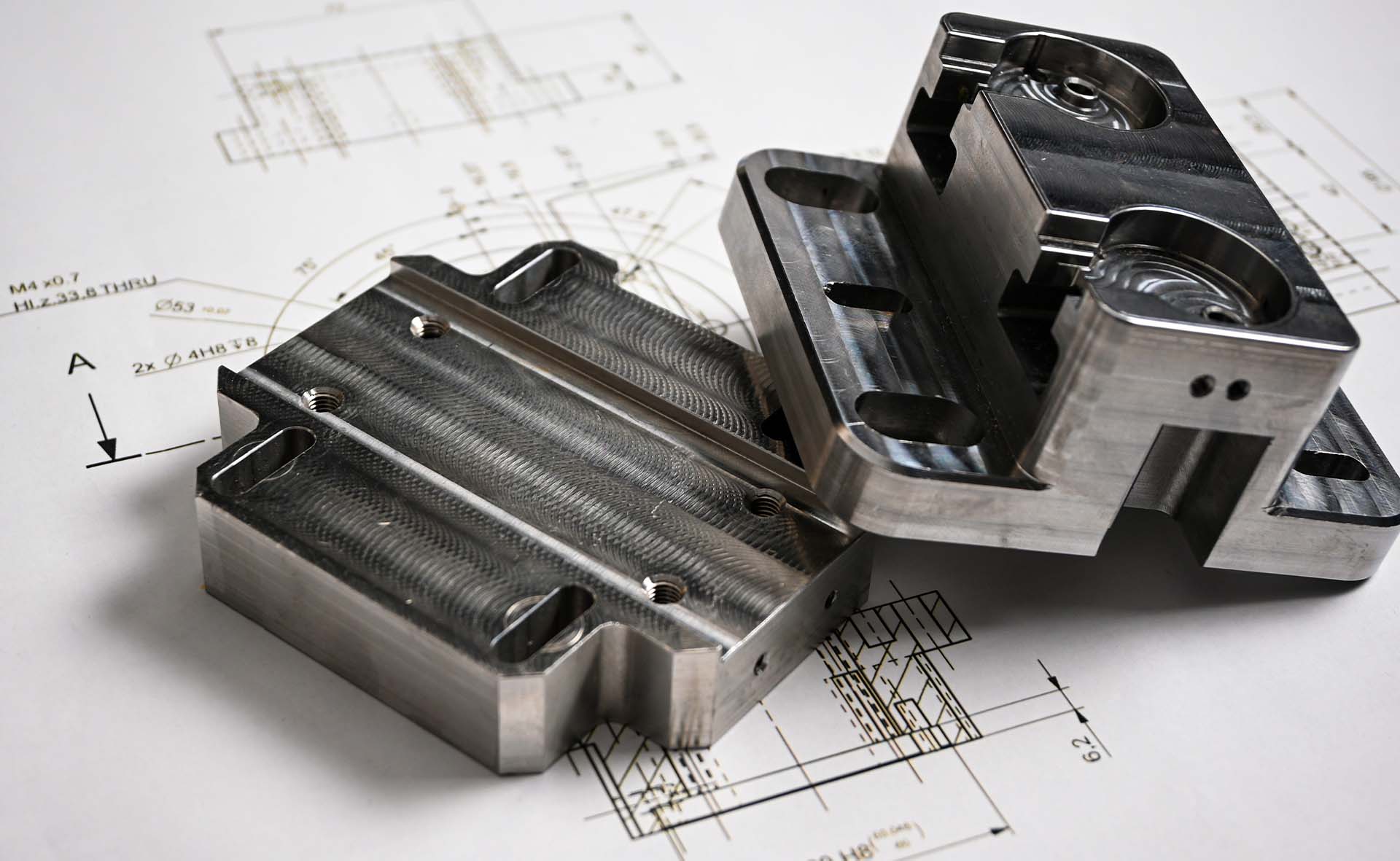
In the globally competitive manufacturing landscape, the demand for rapid tooling has surged, offering significant advantages for companies aiming to enhance their procurement capabilities. According to a report by MarketsandMarkets, the rapid tooling market is projected to reach USD 1.8 billion by 2026, growing at a compound annual growth rate (CAGR) of 12.8% from 2021. This growth is driven by the need for faster product development cycles and the reduction of lead times, as companies strive to bring their products to market more efficiently. As global supply chains continue to evolve, leveraging rapid tooling not only allows manufacturers to optimize costs but also provides them with the flexibility to respond swiftly to market demands. In this blog, we will explore the multifaceted benefits of rapid tooling and its critical role in fulfilling the procurement needs of leading export manufacturing plants across the globe.

 Rapid tooling is becoming essential for optimizing global supply chains, offering various benefits that significantly enhance efficiency. As the world grapples with increased supply chain disruptions post-pandemic, the adoption of rapid tooling allows companies to respond swiftly to market demands.
Rapid tooling is becoming essential for optimizing global supply chains, offering various benefits that significantly enhance efficiency. As the world grapples with increased supply chain disruptions post-pandemic, the adoption of rapid tooling allows companies to respond swiftly to market demands.
Research indicates that companies incorporating advanced rapid tooling can reduce product development times by up to 50%, which is critical in today's fast-paced environment where speed-to-market often dictates competitive advantage.
Additionally, the integration of artificial intelligence and machine learning in supply chain management is revolutionizing demand forecasting. Reports show that AI-based forecasting can improve accuracy by 30-50%, allowing companies to better align production with actual market needs. This shift facilitates more strategic inventory management, reducing overhead costs and minimizing waste.
By harnessing rapid tooling alongside these AI-driven strategies, businesses can create a more resilient and agile supply chain, ultimately enhancing their ability to adapt in an ever-evolving global marketplace.
The evolution of manufacturing in China has positioned the nation as a formidable player in global markets. An essential factor driving this trend is the rapid adoption of advanced technologies and innovative practices. As Chinese companies increasingly lead in various industries, particularly in e-commerce and display technologies, they are not only meeting global procurement needs but also challenging established powers. This shift supports the growing popularity of Chinese manufacturing across numerous sectors, providing cost-effective and efficient solutions that are essential for businesses looking to optimize their supply chains.
Moreover, the rise of cross-border e-commerce is transforming how Chinese brands engage with international consumers. As these companies enhance their marketing strategies and embrace digital platforms, they are able to penetrate foreign markets more effectively. The ability to rapidly produce and deliver products aligns well with the fast-paced demands of global consumers, fostering a competitive edge in the apparel and advanced manufacturing sectors. This seamless integration of innovation and market strategy positions Chinese manufacturers as key players in shaping the future of global commerce.
| Advantage | Description | Impact on Global Procurement |
|---|---|---|
| Cost Efficiency | Reduction in manufacturing costs through advanced tooling techniques. | Enables competitive pricing in global markets. |
| Speed of Production | Faster turnaround times for prototypes and final products. | Accelerates time-to-market for global brands. |
| Quality Control | Enhanced monitoring and management of production standards. | Ensures high-quality products that meet international standards. |
| Customization | Ability to produce tailored solutions that meet specific customer needs. | Builds customer loyalty through personalized service. |
| Scalability | Flexible manufacturing processes that can scale up or down. | Responds quickly to market demand fluctuations. |
In today's competitive market, the need for speed and adaptability in product development has never been more critical. Best rapid tooling offers manufacturers an innovative solution to meet these demands efficiently. By leveraging advanced materials and technologies, rapid tooling significantly reduces lead times, allowing companies to bring products to market faster than traditional methods. This expedited process not only enhances the development cycle but also supports iterative design, where feedback can be quickly incorporated into subsequent prototypes and production.
Flexibility is another key advantage of best rapid tooling. It enables designers and engineers to experiment with multiple designs and modifications without the costly delays commonly associated with conventional tooling methods. As a result, businesses can respond swiftly to market changes and consumer preferences, ultimately enhancing their competitive edge. Furthermore, the ability to produce low-volume parts with high precision helps organizations meet specific customer requirements and foster innovation within their product lines. As rapid tooling continues to evolve, it stands at the forefront of a manufacturing revolution, making it an indispensable asset for global procurement needs.
 When engaging in global procurement, cost considerations are pivotal in striking the right balance between quality and budget. Businesses must navigate a complex landscape where the cheapest option often compromises product quality or service delivery. Understanding how to leverage rapid tooling is crucial in this regard; it not only reduces production time but also enhances precision and consistency in product manufacturing.
When engaging in global procurement, cost considerations are pivotal in striking the right balance between quality and budget. Businesses must navigate a complex landscape where the cheapest option often compromises product quality or service delivery. Understanding how to leverage rapid tooling is crucial in this regard; it not only reduces production time but also enhances precision and consistency in product manufacturing.
Tip: Prioritize suppliers that utilize rapid tooling processes, as they tend to offer a faster turnaround without the associated high costs of traditional methods. This approach enables firms to maintain quality while minimizing expenses, allowing for better resource allocation in other areas of the supply chain.
Moreover, establishing clear communication with suppliers about your budget constraints and quality expectations is essential. Transparent discussions can lead to innovative solutions that satisfy both parties. In addition, monitoring market trends can help you identify cost-effective alternatives without compromising on the quality of materials or services.
Tip: Regularly review and compare procurement strategies against industry benchmarks. This practice not only ensures competitiveness but also highlights areas where cost savings can be achieved while maintaining high standards of quality.
Innovations in rapid tooling are revolutionizing the manufacturing landscape, particularly in global procurement. The introduction of advanced materials and techniques is enabling manufacturers to produce high-quality prototypes at an unprecedented speed. This acceleration in production not only reduces lead times but also allows for greater flexibility in design iterations, ultimately enhancing the product development cycle. As businesses seek to meet the dynamic demands of international markets, rapid tooling emerges as an essential component in maintaining competitiveness.
**Tip:** When selecting a rapid tooling provider, ensure they utilize the latest technologies and materials to optimize your production process. This will not only improve the quality of your outputs but also streamline your supply chain management.
Moreover, the role of digital technologies in rapid tooling cannot be overstated. With the integration of additive manufacturing and 3D printing, manufacturers can produce intricately designed tools that were once deemed impossible or cost-prohibitive. This innovation leads to reduced waste and a more sustainable approach to tooling.
**Tip:** Stay informed about emerging trends in rapid tooling, such as automation and AI technologies, to better position your business for future advancements in manufacturing and exports. Adapting to these trends can help enhance operational efficiency and open new avenues for growth.

| Cookie | Duration | Description |
|---|---|---|
| cookielawinfo-checkbox-analytics | 11 months | This cookie is set by GDPR Cookie Consent plugin. The cookie is used to store the user consent for the cookies in the category "Analytics". |
| cookielawinfo-checkbox-functional | 11 months | The cookie is set by GDPR cookie consent to record the user consent for the cookies in the category "Functional". |
| cookielawinfo-checkbox-necessary | 11 months | This cookie is set by GDPR Cookie Consent plugin. The cookies is used to store the user consent for the cookies in the category "Necessary". |
| cookielawinfo-checkbox-others | 11 months | This cookie is set by GDPR Cookie Consent plugin. The cookie is used to store the user consent for the cookies in the category "Other. |
| cookielawinfo-checkbox-performance | 11 months | This cookie is set by GDPR Cookie Consent plugin. The cookie is used to store the user consent for the cookies in the category "Performance". |
| viewed_cookie_policy | 11 months | The cookie is set by the GDPR Cookie Consent plugin and is used to store whether or not user has consented to the use of cookies. It does not store any personal data. |

